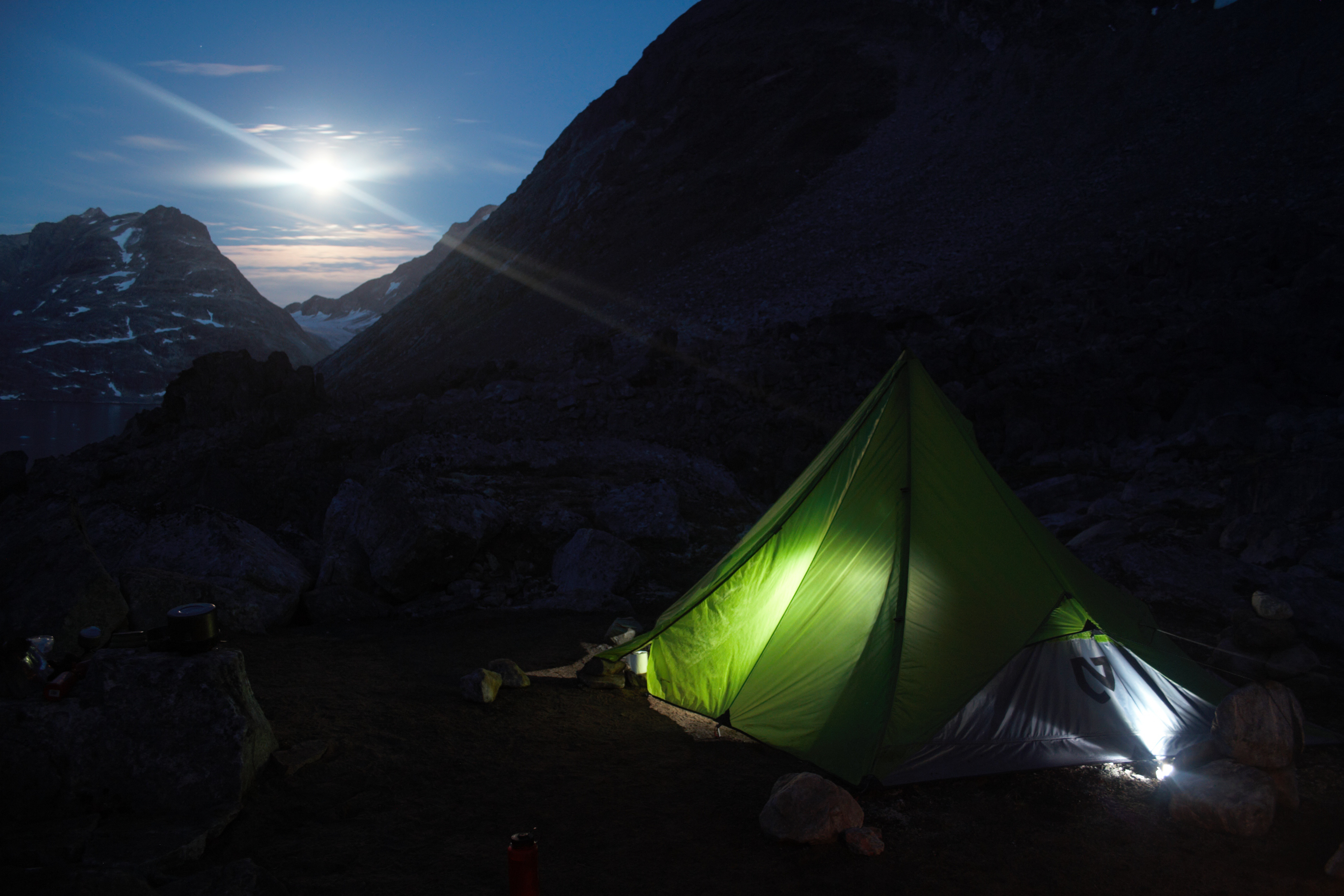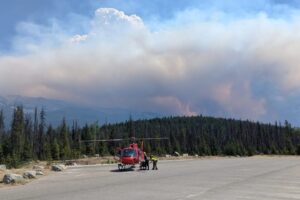The simplest of all outdoor shelters, the floorless tent has been used for centuries and even has its own regional names: Scandinavian lavvu, Siberian chum, Canadian Arctic tupiq, North American tipi, Central Asian yurt and Mongolian ger.

Sami pictured outside of their lavvu in Langfjorden, Norway, early 20th century. Photo: Ellisif Rannveig Wessel/Preus Museum
These large traditional tents allow you to add various types of flooring: a groundsheet, fur, blankets, even a thick pile of evergreen boughs as insulation. This last method, common in subarctic Canada, is time-consuming in winter, because enough boughs must be cut to stack two or three feet thick, to insulate from the snow when compressed.
Yurts and gers come from different regions and feature minor differences: Both use wooden roof beams balanced on top of an expanding lattice frame and often covered with goat felt, canvas or other material. Central Asian yurts use bent roof beams; Mongolian gers have straight ones.

A partly dismantled yurt shows the crown that supports the bent roof-poles that are then lashed to the lattice “wall” below the circular apex frame. Photo by Matthew Traver.
Modern floorless tents use fabric tensioned over one or more poles for rigidity. Pyramid-shaped tents use a single center pole, typically a collapsible metal staff for portable nylon models and a sawn-off piece of timber for heavier canvas shelters.
Wall and ridge tents require multiple standing poles. Some models, such as those produced by Snowtrekker, come with their own aluminum frames, so theoretically they can also be used above treeline. Unfortunately, walled tents do not deflect wind well, so they work best in a sheltered forest. For this reason, Scott and Amundsen both chose pyramid tents on their Antarctic expeditions, one of the few areas in which these two great rivals agreed.

The ridge-shaped Whymper Tent was popularized by British mountaineer Edward Whymper after his first ascent of the Matterhorn, but it is not great in a wind.
Below, a few models of floorless tent available today, and the advantages and disadvantages of this timeless design.
Advantages:
- Excellent floor space-to-weight ratio. One of the lightest models on the market, Nemo’s Apollo, has a packed weight of just 770g and fits up to three people. On the opposite end of the scale, canvas tents built for extended winter use in tree country, such as ATUK’s Cris tent, weigh 24kg. These tents — regionally known as Baker tents, Alaskan tents or Labrador tents — typically include a metal jack in the roof or gable as an exit for the pipe of a small wood stove, which can heat the interior to room temperature, no matter how cold it is outside. Arctic Oven tents are a modern (and expensive) take on this classic wilderness design.
- Quick and easy to set-up on all types of terrain, including uneven surfaces such as a scree field. It is even faster to pack away, thanks to its minimal components.
- It’s easy to regulate temperature by raising or lowering the center pole. For example, in cold or rainy weather you can lower the pole so that the rain fly drapes on the ground, eliminating wind-borne rain and drafts. In hot weather, simply raise the pole for greater ventilation.
- A ski, paddle or trekking pole can serve double duty as the centre pole, either by choice or in an emergency. Some brands, such as MSR’s Twin Sisters 2-Person Tarp Shelter are designed to be pitched at sitting height with two trekking poles, although they also include their own proprietary poles.
- Ample height allows you to bring your gear inside for added security or carrying out repairs (such as on a bike). The most palatial of them all is Helsport’s 12- to 14-person Varanger tent, weighing 8.59kg. For those looking to homestead and unwilling to rear and skin their own livestock, it’s even possible to buy your own yurt for as little as US$7,000.
- An optional wood burning stove gives some models, such as Robens’ Outback range of tents, the option of comfortable four-season living. Without a flammable floor material, they are also safer for cooking inside.
Disadvantages:
- Floorless tents are neither bugproof nor sealed off from wet or muddy ground. However, a number of brands offer a removable floor system integrated with a bug net. Black Diamond’s Mega Bug inner, for example, fits their Mega Light tent. Mountain Laurel Designs, which specializes in ultralight gear, also provide a removable bathtub style groundsheet that integrates with their range of floorless shelters, for those who don’t require bug protection.
- In heavy rain, you need to be more careful where to pitch your tent. Pick slightly higher ground.
- In extreme winds, they will be less stable due to their height, non-aerodynamic shape and large surface area. Wind can also snake underneath into the interior, except in winter, when snow piled along the outside edge prevents this.

Russian adventurers used this little-known but clever design of floorless tent to ski to the North Pole. The spokes of the central crown fold for transport via a wing nut. The separate perimeter sections nest together at each elbow and also hold the spokes. Skis double as tremendously strong poles. A single layer of nylon fabric draped over the frame is secured in place with snow piled along its bottom edge. This model shelters a dozen skiers, but smaller or larger versions are possible. Photo: Jerry Kobalenko






